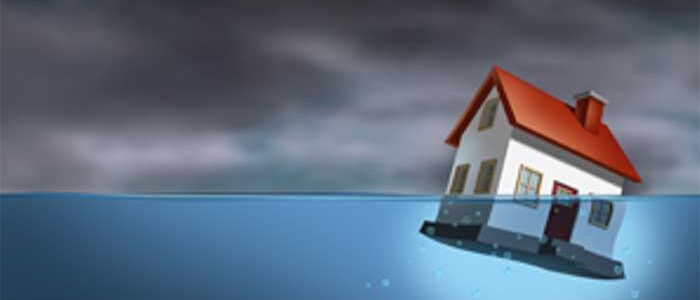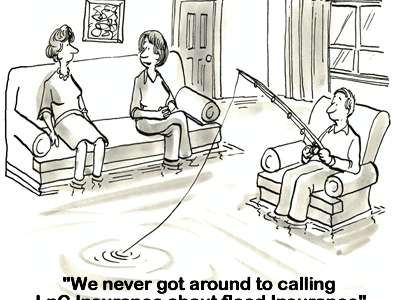CoFlood Insurance
Why Consider Florida Flood Insurance?
Floods are the top natural disaster in the United States. You don’t need to live near a lake, river or the coast to experience a flood. In fact, 25 percent of flood losses come from low- to moderate-risk areas in Florida.
Did you know that eight of the most significant flood events in our nation’s history have occurred in the past two years? And, on average, only two inches of water in your home can cause $7,800.00 or more in damage!
That’s why it’s important to protect your home and valuables with Flood Insurance.
In some flood zones, flood insurance is affordable at about $1.40 per day (average is $503 a year) and is 100% guaranteed by the U.S. government.
Don’t delay: Flood insurance requires a 30-day waiting period on most new policies.
Flood insurance policies are issued by First Community Insurance Company, which is authorized by the Federal Emergency Management Agency (FEMA) to sell flood insurance.
Common Questions about Florida Flood Insurance
Losses due to flooding are not typically covered under most homeowners policies, so it may be wise to consider adding a Florida Flood Insurance policy for complete protection
Q: Doesn’t my homeowners insurance policy cover flooding?
No. Flood damage is not typically covered by a homeowners insurance policy.
Q: What is covered by flood insurance?
Your flood policy is intended to cover physical damage to your building or personal property “directly” caused by a flood. Please download the attached Summary of Coverage brochure created by the Federal Emergency Management Agency (FEMA).
Q: I live in a low-risk flood zone. Do I really need flood insurance?
Most likely, yes. It’s a good idea to buy flood insurance even if you live in a moderate-to-low risk area. About 25 percent of all flood insurance claims come from areas with low-to-moderate flood risk.
You may qualify for the Preferred Risk Policy, (a lower-cost flood insurance policy) that provides contents coverage beginning at $109 per year and building plus contents coverage beginning at $209 a year.
Q: Why do I need flood insurance, even though my community has never been flooded?
Flooding occurs in moderate-to-low risk areas as well as in high-risk areas. Poor drainage systems, rapid accumulation of rainfall, snowmelt, and broken water mains can all result in flood. Properties on a hillside can be damaged by mudflow, a covered peril under the Standard Flood Insurance Policy.
Structures located in high-risk flood areas have a significant chance (26%) of suffering flood damage during the term of a 30-year mortgage. A home mapped in a high-risk area is 2-1/2 times more likely to suffer damage from a flood than a fire in the lifetime of a typical mortgage! For these reasons, flood insurance is required by law for buildings in high-risk flood areas as a condition of receiving a mortgage from a federally regulated or insured lender.
Q: Why does my mortgage lender require me to buy flood insurance?
Under federal law, the purchase of flood insurance is mandatory for all federal or federally related financial assistance for the acquisition and/or construction of buildings in high-risk flood areas (Special Flood Hazard Areas or SFHAs).
The amount of flood insurance coverage required by the Flood Disaster Protection Act of 1973, as amended by the National Flood Insurance Reform Act of 1994, is the lesser of the following:
- The maximum amount of NFIP coverage available for the particular property type,
- The outstanding principal balance of the loan, or
- The insurable value of the structure.
If the property is not in a high-risk area, but instead in a moderate-to-low risk area, federal law does not require flood insurance; however, a lender can still require it. It is also recommended since historically about one-in-four flood claims come from these moderate-to-low risk areas.
Q: Does flood insurance cover flood damage caused by hurricanes, rivers, or tidal waters?
Yes, providing that, if confined to your property, the flood water covers at least two acres. A general condition of flood also exists if two adjacent properties are inundated, one of which is yours.
Q: If my home is flooded, won’t federal disaster assistance pay for my damages?
Not necessarily. Federal disaster assistance typically comes in the form of a low interest loan to help cover flood damage, not compensation for your losses. Even then, those loans are only available if the president formally declares a disaster and must be repaid along with any existing mortgage.
Q: When will my flood insurance go into effect?
Typically there is a 30-day waiting period before a flood insurance policy becomes effective.
Note: The information above was obtained from the Federal Emergency Management Agency (FEMA). View the Federal Emergency Management Agency’s (FEMA) website at www.fema.gov. Flood facts source: www.floodsmart.gov.



